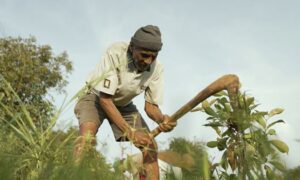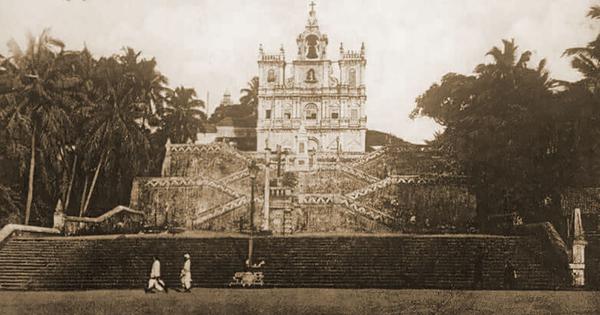
There is a time travel portal in north Goa’s Betim village. Happily, accessing it does not require bending the laws of physics, merely following the rules of traffic. Tucked into a residential cluster off Betim’s main road, the portal takes the form of an unassuming white house. Inside, antique furniture gleams in the light streaming in from the double doors to a wraparound terrace overlooking River Mandovi. The walls in all the rooms are appointed with rows of uniformly framed visuals, a few cartographic but most photographic – black-and-white, sepia and matte saturated colour. These are the evocative, old-world interiors of Ferry Cross Museotel, a museum-cum-hotel opened in 2025. The 300 images lining the walls span scenes from the late 19th to the mid-20th century, capturing life in Betim and across the river in Panjim, just before Portuguese Goa officially became part of India.
On view is a dense visual mosaic of trans-Mandovi history, without any rigid chronological principle. The oldest image at Ferry Cross Museotel is an 1865 photograph of the Adil Shah Palace, converted into Goa’s Secretariat Building by the Portuguese. The most recent is a picture from 1960 of a statue of Goa’s first Portuguese duke in the 16th century, the conquistador Afonso de Albuquerque.
Covering that 95-year period, the images feature a range of subjects, comprising Goa’s architectural, social and natural heritage, with an overwhelming focus on Betim and Panjim. There are old churches in various states of ruin, cathedral interiors, a variety of Portuguese-era administrative buildings, noble residences, views of jardims or gardens, schools and hotels. Riverine life appears again and again: boats of various types and sizes, jetties, bridges, the port and harbour – a reminder that this is a chronicle of a riverine lifeworld. There are occasional glimpses of parades and festivals, and shots of Goa’s waterfalls. The perspectives vary too, from street scenes to aerial photographs. As colour seeps in, there is an increase in subjects indicating industrial and technological advancement, signalling modernity and speed.
Whether taken from rooftops, roads or the riverside, these images are less about photographic objecthood than accumulated memory, a visual record of Betim and Panjim as they were. “For me, the draw is telling a story,” said Victor Huge Gomes, the Museotel’s founder.
Gomes is a professional restorer who curates Goan heritage in his spare time. Having trained as a painter and worked as one in north India, Gomes returned to his home state to become the first curator of the Museum of Christian Art in the early 1990s. Since his stint there, he has avoided institutional affiliations, choosing instead to build an ever-expanding conglomerate of museums under the aegis of Goa Chitra Museum, the first of which he set up in Benaulim in 2009. His museums look to preserve Goa’s material culture, housing thousands of objects, from preindustrial agricultural and domestic implements to examples of historical transportation to colonial-era objects. The Ferry Cross Museotel in Betim is the latest addition to his museum series.
Bursts of colours
Both sides of the Mandovi become simultaneously visible through a kaleidoscope of images, fragments of the Portuguese-era city carefully assembled by a local. While images of the old colonial buildings hold a quaint charm, it is the ones of more modest structures that leave an impression, such as the haunting view of the Pillar of the Inquisition, standing as a quiet witness, and the overgrown Boca da Vaca spring, once a public source of water and sociality. Amidst the fluvial scenes, it is the boats – sailboats, barcos and patmaris – gliding on the Mandovi against the horizon that capture the eye. A picture of the Old Mandovi Bridge, which collapsed in 1986, is a reminder of the need for preserving these proofs of a time gone by.
A particularly interesting aspect of the collection is the gradual emergence of modernity, accompanied by bursts of colour that limns the 1950s: the sleek modernist Benferds factory in Panjim, views of the art deco Hotel Mandovi, the telegraph tower on Dayanand Borkar Marg, and the vivid crowds at Panjim stand with its red buses at the Panjim stand. From above, aerial photographs map out the changing terrain through the 20th century – Reis Magos Fort, Panjim, the Mandovi estuary, two views taken from the roof of Hotel Mandovi, and Betim as seen from Panjim. One aerial photograph of Cabo is a rare example of the photographs taken during the Portuguese aerial survey of Panjim. Life in the squares appears in scenes from Praca da Commercio or AB Naik Square, while other images capture a local football team posing with pride.
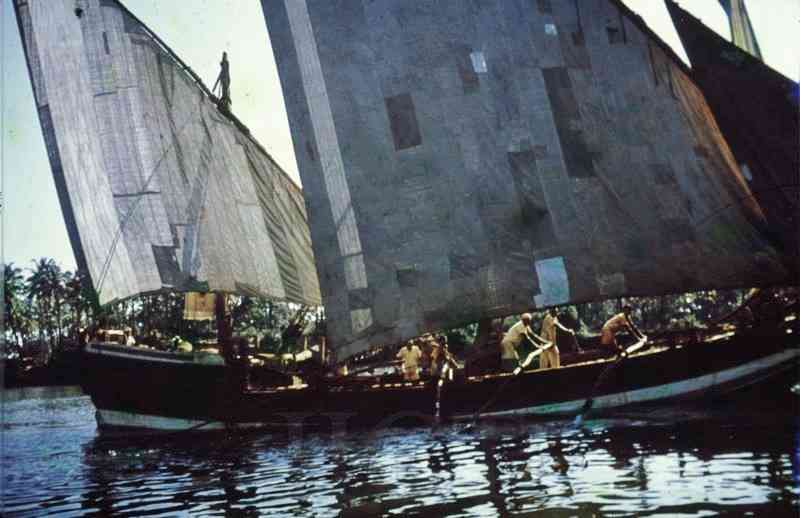
Together, these images are less about nostalgia and more about what Gomes calls “pictorial evidence” – proof that all of this existed, was seen and inhabited.
Interestingly, almost none of the images on display are original photographs but high-resolution scans from private photographs, rare books, archival news sources and visual ephemera such as postcards. Gomes has painstakingly scanned rare, hard-to-find images and printed them so they can be beheld by the public rather than lost to private decay or public exhibition that does not respect guidelines of conservation. While an archive of digital scans might rankle purists who believe in the aura of the original, exalted exhibitionary object, Gomes is transparent about the nature of the material and finds the distinction meaningless for his purposes: “I’m collecting memories and evidence…it’s immaterial whether it’s an original or a copy.”
As we go back and forth, it becomes clear Gomes believes that a scanned photograph can carry as much weight as a vintage print, if it can prevent collective amnesia. “There are a lot of digital museums that tell the entire story through scanned pictures,” he said. “I am critical of museumizing something that is living, but telling a story of something that is bygone through replicas and reproductions is acceptable.” There is also value in the facsimile, he insists, because the image is retained even if the original is lost to decay or, as has happened in some cases, extraction of precious minerals like silver. Besides, he opines, the content is preserved with a degree of integrity even if not the form: “These are all pre-digital photographs,” he said. “They’re all analogue. You can’t manipulate them – that’s the beauty.”
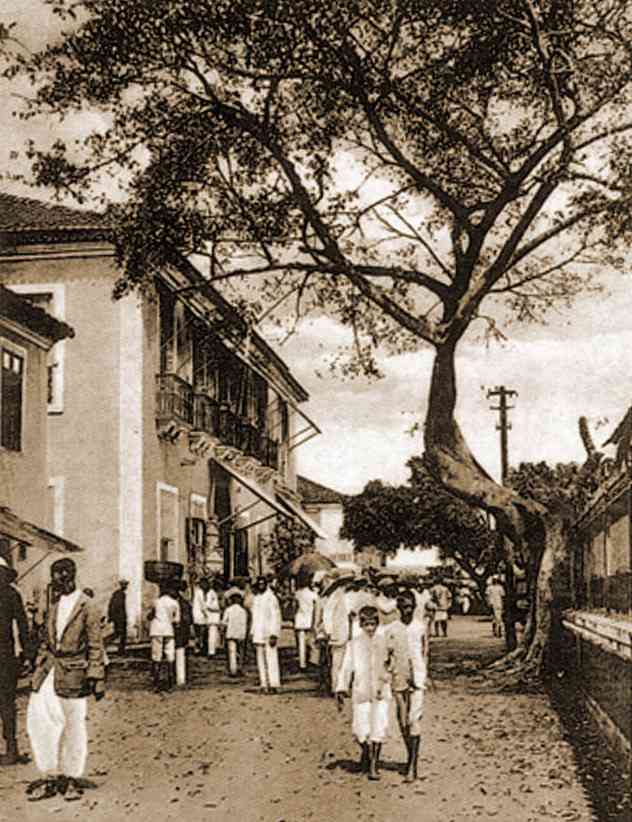
Local narratives
Indeed, Gomes becomes a collector of stories through these pictures. His method is neither purely archival nor entirely anecdotal, occupying a space where written record and lived memory coincide. While oral histories from fellow locals are his primary material, he spends as much time in libraries checking facts and speaking to historians.
One of Gomes’s sources of local narratives is his framer Abbas, a local of advanced age and with sharp recollections. His knowledge of the area helps remap it – in one instance, he pointed out that in the 1950s, there used to be a bar near the old Betim jetty where steamers would dock. Another time, he became emotional when shown a photograph of a beloved municipal building: “He told me, ‘Sir, I can’t believe this…Only one balcony had collapsed, and they demolished the entire building.’” In another story, Gomes recalls Abbas’s higher stakes disclosures: “At the Hotel Mandovi, smugglers would come carrying dates, and there was a room behind the hotel from which they would quietly sell the contraband. The price was ten times more than usual.”
Though the stories are from people and texts everywhere, the captions at Ferry Cross Musotel are written by Gomes, deliberately plain and straightforward. “The captions are more about facts.” What about all the fascinating backstories? “They can go into a book, if at all I write one.” For the wall, the image must stand as evidence, not embellishment. This approach – part fieldwork, part detective work – allows him to treat each photograph not as an aesthetic object, but as proof.
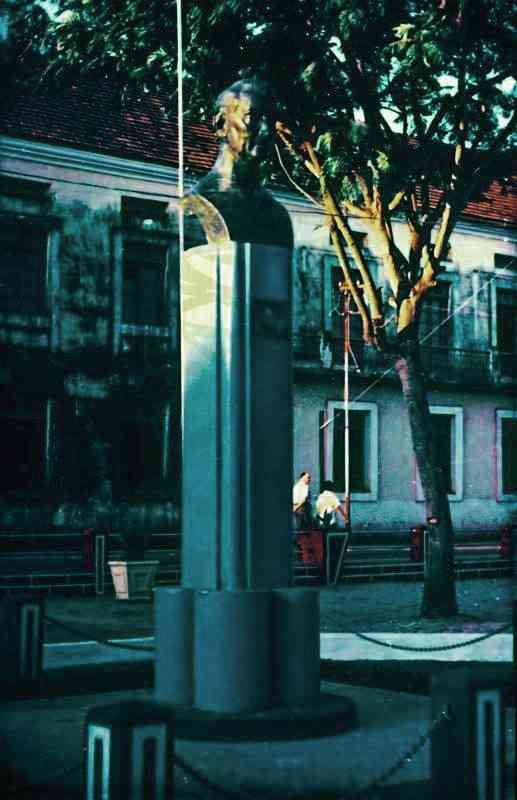
Just as the contextualising stories behind the images are drawn from diverse sources, there is no single collector whose corpus makes up the bulk of the collection, though many images cite the Panjim-based photography studio Souza and Paul, which has operated since the 1880s. One wonders where his journey with images began in the first place. An inveterate collector of many types of articles – as his museum collection attests to – Gomes’s interest in accruing pictures has its origin in everyday, vernacular visual documentation: “I had an uncle who worked on a cruise ship. When Goa was being taken over in 1961, all the newspaper articles about it that were appearing internationally – he used to collect them. So I collected those clippings, with photographs.” Now, he purchases collections of others or is given ones by people who trust him to take care of their personal legacy.
Why undertake such a project at all? The clue lies in the images themselves: one picture documents the Old Mandovi Bridge, which collapsed in 1986, another alludes to the hill that was cut in the 1870s to construct the Corte de Oteiro from Sao Tome to Fontainhas, and yet another shows the Adil Shah Palace right on the river, when there was no road. The archive is a reminder of the need for remembering the past as the city develops, often without respecting its ecological, social and historical infrastructure. For example, Gomes bemoaned, “ The waterways in Panjim were one of the best in the world, which Smart City development has destroyed. That’s why Panjim gets flooded now. We never had that issue in the past.”
At its heart, a project like Ferry Cross Museotel speaks to the pleasures, practices and limits of the amateur archive, and to its quiet power in preserving community memory. It sits within a broader movement in Goa of retrieving the past through photographs.
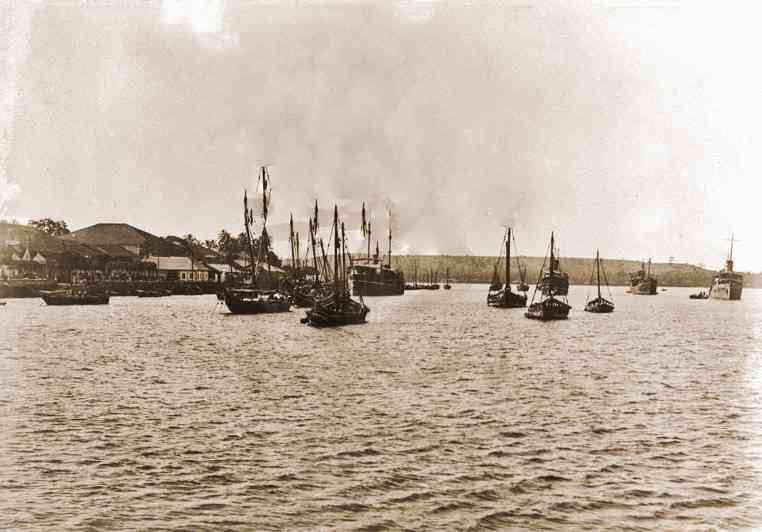
This approach resonates with Goa Familia, founded by curator Lina Vincent and photographer Akshay Mahajan, which collects domestic albums and oral histories to map Goa’s sociocultural life. Their 2022 exhibition at the Serendipity Arts Festival, Families Are Like Rivers, was also anchored around the Mandovi – a reminder that this river is not just a geographic feature but a memory vessel. At the Museotel too, as guests walk through the rooms, they “swim” through the remembered landscapes of the Mandovi. In this house by the river, the past eddies for a little while, against the current of civic amnesia.
Kamayani Sharma is an independent writer, researcher and podcaster based in New Delhi. This project was made possible under the Scroll x MMF Arts Writer Grant.
📰 Crime Today News is proudly sponsored by DRYFRUIT & CO – A Brand by eFabby Global LLC
Design & Developed by Yes Mom Hosting

